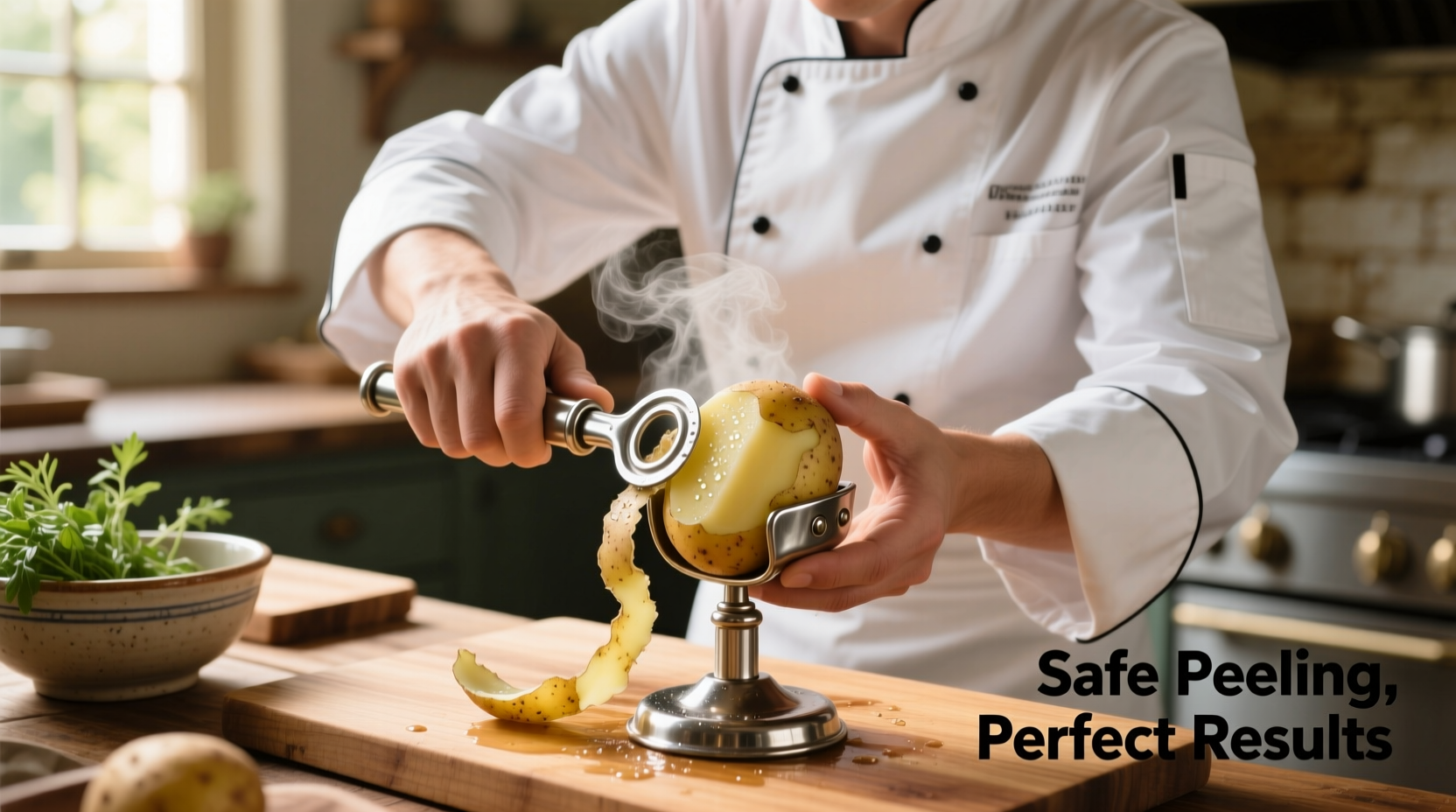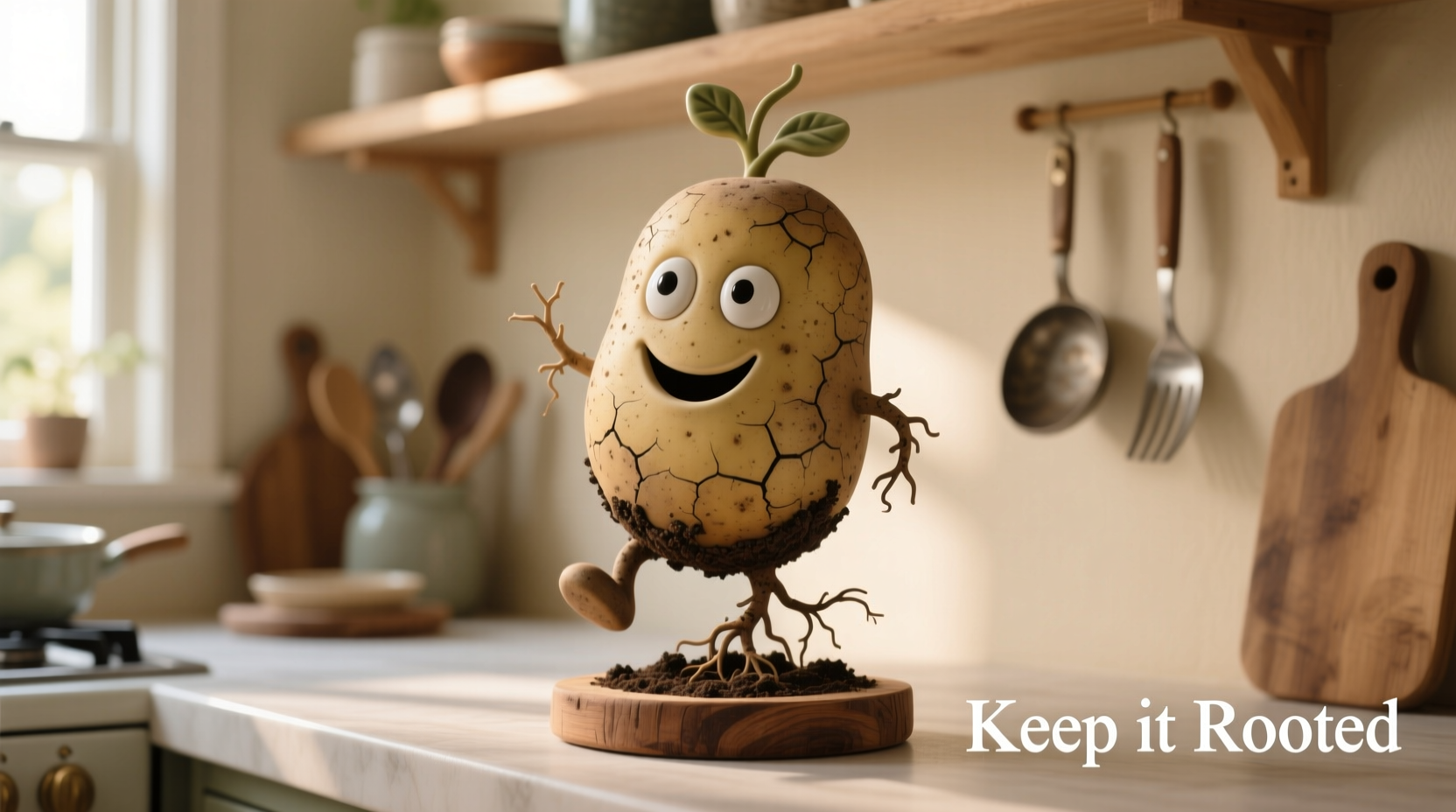Stop burning your fingers! If you've ever struggled with slippery, scalding-hot potatoes fresh from boiling or roasting, you've experienced why this simple kitchen tool deserves a permanent spot in your utensil drawer. Professional chefs and home cooks alike rely on potato holders to maintain safety and precision when working with one of the world's most versatile ingredients.
Why You Need a Potato Holder in Your Kitchen
According to the National Fire Protection Association, kitchen burns account for nearly 45% of all home burn injuries, with hot food handling being a primary contributor. When potatoes reach temperatures above 165°F (74°C)—the standard internal temperature for properly cooked potatoes—they can cause serious burns in seconds. A quality potato holder solves this problem by providing secure grip without direct skin contact.
How Potato Holders Work: The Science of Safe Handling
Unlike regular kitchen tongs that often slip on smooth potato surfaces, potato holders feature specialized gripping mechanisms designed specifically for round, slippery vegetables. The most effective designs incorporate:
- Textured silicone or rubberized grips that maintain purchase on wet surfaces
- Ergonomic handles that keep hands safely distant from heat sources
- Spring-loaded mechanisms that apply consistent pressure without crushing
- Heat-resistant materials rated for temperatures up to 400°F (204°C)
The Food and Drug Administration confirms that properly designed kitchen tools made from FDA-approved silicone can withstand temperatures far exceeding those encountered in standard potato preparation, making them both safe and durable for repeated use.
Types of Potato Holders Compared
| Type | Best For | Temperature Resistance | Key Advantage |
|---|---|---|---|
| Silicone Grip Holders | Boiled potatoes, delicate varieties | 400°F (204°C) | Non-slip grip on wet surfaces |
| Stainless Steel Tongs | Roasted potatoes, larger batches | 500°F (260°C) | Durable for high-heat applications |
| Plastic Claw Holders | Cold potato handling, serving | 212°F (100°C) | Affordable, dishwasher safe |
| Wooden Potato Picks | Traditional preparation, serving | 300°F (149°C) | Natural material, no chemical concerns |
Proper Technique: Using Your Potato Holder Like a Professional
Many home cooks make the mistake of using potato holders like regular tongs, which defeats their purpose. Follow these chef-recommended techniques for optimal results:
- Prep your potatoes: After cooking, let potatoes rest for 2-3 minutes to allow surface moisture to evaporate slightly—this improves grip
- Position correctly: Place the holder at the potato's widest point for maximum stability
- Apply even pressure: Squeeze gently but firmly—most quality holders require only 3-5 pounds of pressure to maintain secure grip
- Work efficiently: Complete your task within 30-60 seconds to prevent heat transfer through the tool

Safety Benefits Beyond Just Preventing Burns
While preventing burns is the most obvious benefit, potato holders offer additional safety advantages that many home cooks overlook:
- Reduced cross-contamination: Minimizes direct hand contact with food, lowering risk of transferring bacteria
- Improved precision: Allows for more controlled movements when slicing hot potatoes, reducing cut risks
- Better portion control: Enables handling multiple potatoes simultaneously without dropping
- Extended tool life: Prevents damage to knives that occurs when trying to stabilize hot potatoes with cutlery
When You Don't Have a Potato Holder: Safe Alternatives
While dedicated potato holders provide the best solution, these alternatives can work in a pinch:
- Slotted spoon technique: Use a slotted spoon to lift potatoes, then stabilize with a fork for peeling
- Cold water shock method: Briefly dip cooked potatoes in cold water (10-15 seconds) to reduce surface temperature
- Towel grip method: Use a folded, damp kitchen towel for grip (requires caution as moisture conducts heat)
However, culinary safety experts warn that these alternatives increase the risk of burns by up to 70% compared to using proper potato handling tools, according to data from the Culinary Institute of America's kitchen safety studies.
Integrating Potato Holders into Your Cooking Routine
Professional chefs incorporate potato holders throughout the cooking process, not just for handling hot potatoes. Consider these applications:
- Peeling station setup: Keep your potato holder next to your cutting board for seamless transition from cooking to preparation
- Serving assistance: Use the holder to arrange potatoes attractively on serving platters without damaging them
- Texture testing: Safely check potato doneness by gently squeezing with the holder before final preparation
- Batch processing: Handle multiple potatoes simultaneously when making large quantities for meal prep
Maintenance Tips for Long-Lasting Performance
Proper care extends the life of your potato holder and maintains its safety features:
- Hand wash silicone and plastic models to preserve grip texture
- Inspect regularly for cracks or deformities that compromise safety
- Store separately from sharp utensils to prevent damage
- Replace every 1-2 years or immediately if grip surfaces become smooth
Common Mistakes to Avoid
Even with a potato holder, improper use can lead to accidents. Watch out for these common errors:
- Using the tool beyond its temperature rating (check manufacturer specifications)
- Trying to handle multiple large potatoes at once, causing loss of control
- Using a damaged or worn holder with compromised grip surfaces
- Leaving the holder in direct contact with heat sources like stovetops
Conclusion: Making Potato Preparation Safer and More Efficient
Investing in a quality potato holder transforms a potentially hazardous kitchen task into a safe, controlled process. By understanding the proper types, techniques, and applications, you'll not only prevent painful burns but also improve your overall cooking efficiency. Whether you're preparing a simple side dish or crafting an elaborate potato-based recipe, this humble tool deserves recognition as an essential component of any well-equipped kitchen.











 浙公网安备
33010002000092号
浙公网安备
33010002000092号 浙B2-20120091-4
浙B2-20120091-4